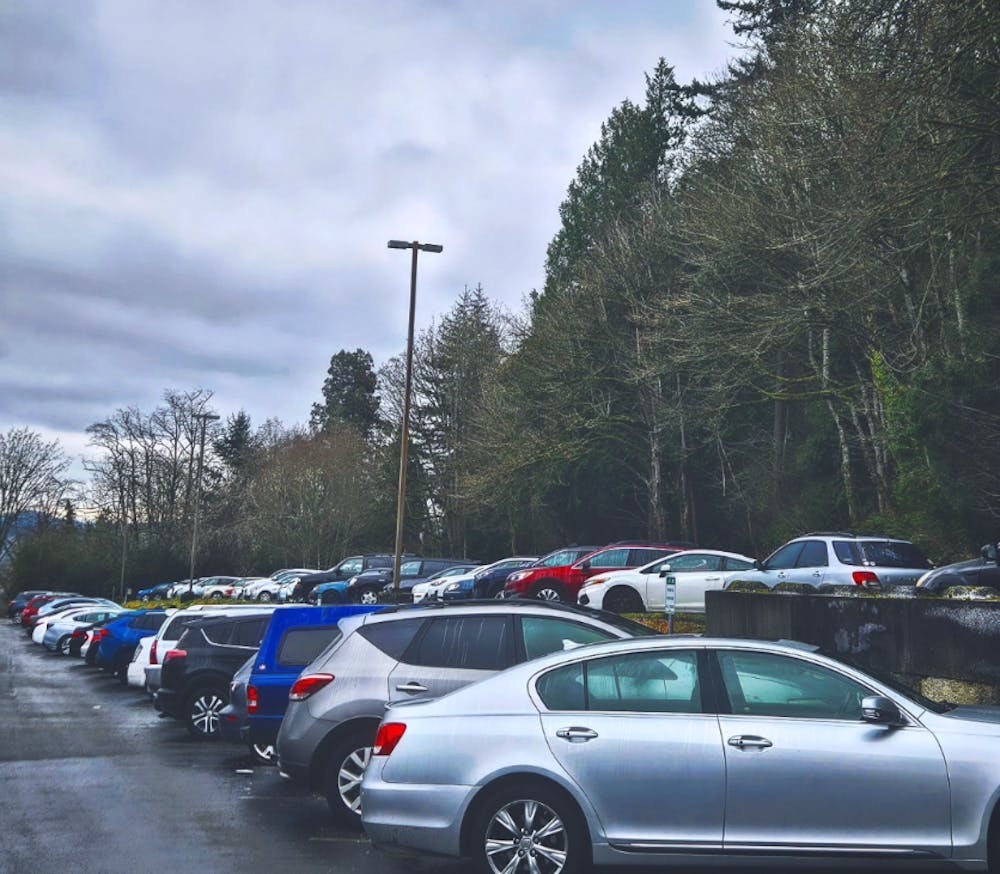For incoming students at Western Washington University, securing a parking permit may be a long shot. As waitlists and permits are assigned based on credit seniority, students with more credits have a better chance of obtaining one. Even for those who do get a permit, finding a parking spot can be a challenge due to limited availability.
“Parking is always a big concern for Western students, but about 50% of students bring a car to campus when they move to Bellingham,” said Andrea Reiter, the associate director of active transportation at Western. “Of those, about half claim to rarely use their car once they’re here. Students often realize that the bus is more convenient, and parking is difficult even with a permit.”
Olivia-Marie Nelson, a fourth-year student working at Western’s transportation office, sees this issue firsthand.
“Working at transportation services, I can see why things are the way they are,” Nelson said. “I strongly encourage people to bus, carpool, bike, or walk if they’re able to.”
Western lacks enough space to accommodate all students' parking needs. This forces those living off-campus to find alternative ways of getting around.
Western provides all students with a universal bus pass, allowing free rides on the Whatcom Transportation Authority (WTA) system.
Beyond buses and biking, Western offers another transportation option: the Starlight Shuttle Program. The late-night safe ride service provides students a way to get around campus and surrounding areas without having to rely on walking alone, using a rideshare service, or driving when they shouldn’t be.
“I believe students consider it a valuable resource that helps reduce car usage,” Mike Penick, the shuttle program manager, said. “Most students appreciate the service and use it regularly. Parking in residential areas at night is difficult, so students are less likely to take their cars if they know they might not find a spot when they return.”
Many students use the Starlight Shuttle to get to and from work after WTA buses stop running. To enhance safety, the program will soon roll out dual-facing dash cams in all shuttles.
“These cameras protect both drivers and riders in case of any incidents,” Penick said. “Riders will be made aware of the recording and can opt out by choosing not to ride.”
With parking in high demand and alternative transportation options readily available, students are encouraged to consider whether bringing a car to campus is worth the hassle.
“We have amazing service from WTA to get students to and from campus, nearby neighborhoods and downtown,” Reiter said. “The city also has great bike infrastructure, with bike lanes leading to campus from both the north and south. The majority of students live within a mile of campus, which is about a 20-minute walk or a five-minute bike ride.”
Penick emphasized the financial and practical considerations of bringing a car to campus.
“Convenience and cost are the biggest factors in whether a student will use their car,” Penick said. “Parking permits, fuel, maintenance, insurance and incidentals all add up. Students should weigh these costs against how often they truly need a car.”
Mishele Ross (she/her) is a campus news reporter for The Front this quarter. She is a second-year journalism news/ed major. When she is not hunting down a source or hiding out in the library writing a story, you can find her listening to music, bowling, or playing a round of golf. You can reach her at misheleross.thefront@gmail.com.






